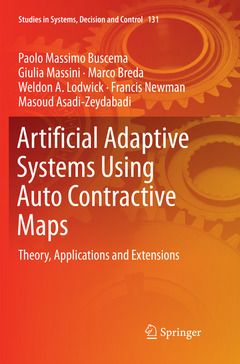Description
Artificial Adaptive Systems Using Auto Contractive Maps, 1st ed. 2018
Theory, Applications and Extensions
Studies in Systems, Decision and Control Series, Vol. 131
Language: English
Subject for Artificial Adaptive Systems Using Auto Contractive Maps:
Keywords
Associative Memory; Data Driven Machine Learning; Fixed Point Theory; Fuzzy Data Sets; Graph Theoretic Methods; Deep Learning; Auto Associative ANNs; Adaptive Algorithms; Spin Network; Auto-CM Weights Matrix; Dataset Transformation; Hybrid Artificial Neural Networks; Auto-CM Neural Network; Content Addressable Memory
Publication date: 12-2018
Support: Print on demand
Publication date: 03-2018
Support: Print on demand
Description
/li>Contents
/li>Comment
/li>
This book offers an introduction to artificial adaptive systems and a general model of the relationships between the data and algorithms used to analyze them. It subsequently describes artificial neural networks as a subclass of artificial adaptive systems, and reports on the backpropagation algorithm, while also identifying an important connection between supervised and unsupervised artificial neural networks.
The book?s primary focus is on the auto contractive map, an unsupervised artificial neural network employing a fixed point method versus traditional energy minimization. This is a powerful tool for understanding, associating and transforming data, as demonstrated in the numerous examples presented here. A supervised version of the auto contracting map is also introduced as an outstanding method for recognizing digits and defects. In closing, the book walks the readers through the theory and examples of how the auto contracting map can be used in conjunction with another artificial neural network, the ?spin-net,? as a dynamic form of auto-associative memory.




